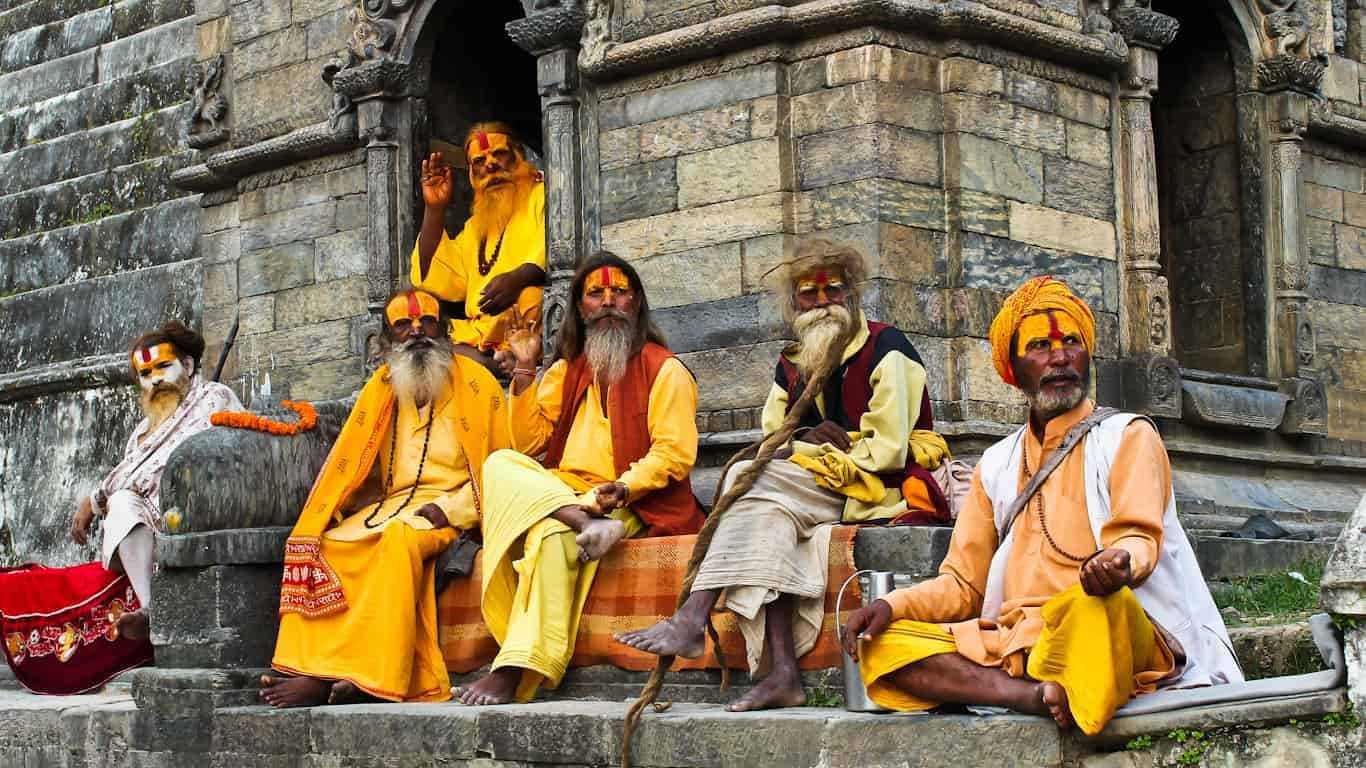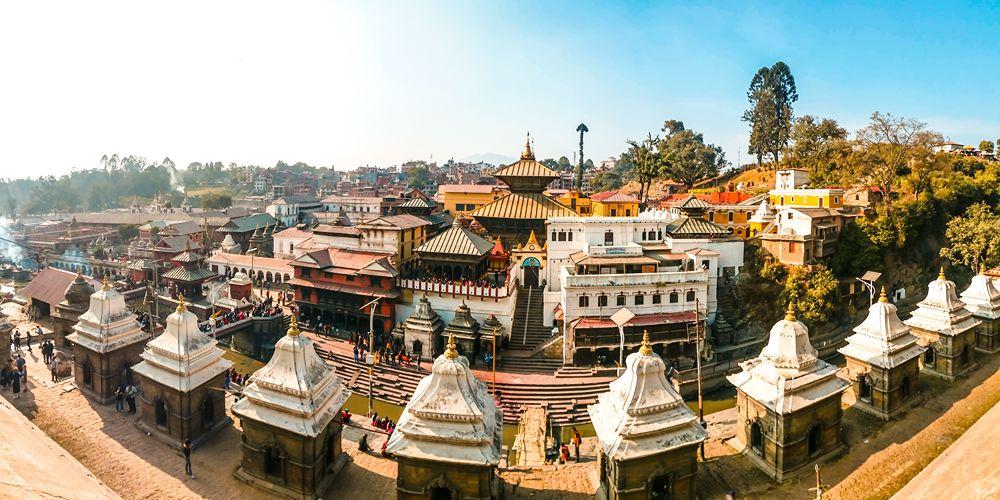Maha Shivaratri in Nepal

Holy Sadhus in Pashupatinath Temple
Maha Shivaratri in Nepal- Mythology, Pilgrimages, and Celebration
Maha Shivaratri is one of the most significant Hindu festivals. The fourteenth day of the lunar month is called Shivaratri. In a year, there are 12 Shivaratri, but the one on Krishna Chaturdashi in the month of Falgun (Feb or Mar) has special significance, and hence it is called "Maha Shivaratri,” which is also known as "Shiva's Great Night."
Mythology Behind Maha Shivaratri
There are many legends on why Shivaratri is celebrated. The first one says Shivratri is celebrated to commemorate Lord Shiva’s courageous act of drinking all the blue poison extracted from Samudra Manthan (Churning of Sea). Since Shiva’s throat turned blue because of drinking the poison, he was since then called Nilkantha.

The second legend says that Shivaratri is celebrated to mark the wedding day of Shiva and Parvati. It is believed that Lord Vishnu conducted the marriage as Parvati's brother with the creator-god Brahma serving as the wedding priest. Sages blessed the pair.
Another mythology says Lord Brahma and Vishnu once argued about who was superior. To solve this, Lord Shiva urged them to discover the end of a massive fire that raged throughout the cosmos.
Vishnu and Brahma then raced to the end of the fire but couldn't find any. But Brahma claimed to find the end of the fire, and this lie angered Lord Shiva. He then cursed Brahma, saying that Brahma would never be worshipped. This day is also recognized as Shivaratri.
Where do People go on Shivaratri?
On this day, every devotee of Lord Shiva all over the world, including Nepal, visits nearby Shiva temples. In Shiva Ratri, Pashupatinath Temple, one of the oldest Shiva temples, is the most crowded temple with devotees and Sadhus from India.

Besides Pashupatinath:
Pindeshwar( Sunsari),
Halesi Mahadev (Khotang),
Kusheshwar (Sindhuli),
Jaleshwar Mahadev( Mahottari),
Doleshwar and Ashapuri (Bhaktapur),
Gokarneshwar Mahadev(Kathmandu),
Santaneshwor Mahadev( Lalitpur),
Gupteshwar (Kaski), Siddhababa(Palpa), and
Baidyanath Dham(Achham)
They are the major pilgrimages that get crowded with Shiva devotees on Maha Shivaratri.
What do people do on Shivaratri?
Even though most women fast, unmarried to find a good spouse and married to extend their husbands' lives. Men do as well. For devotees, Shivaratri starts with a ritual bath in the morning, followed by taking Darsan of Lord Shiva in temples, offering milk, Panchamrit (Milk, Sugar, Ghee, Honey, curd), bananas, sandalwood paste, white and yellow flowers, bel leaves(stone apple), etc.

People chant special Shiva-pleasing mantras to perform pooja on this auspicious day. They also donate food and money to the Sadhus or the beggars. Devotees also smoke G anja (marijuana ) and Datura (thornapples or jimson weeds), which are the spiritual gifts of Lord Shiva.
Also, people prepare a special sweet dish called “Bhang Ladoo” which has some bhang(seeds of marijuana). Another popular recipe made during Shivaratri in Nepal (mostly in Terai) is Thandai, a cold drink made with a mixture of almonds, fennel seeds, rose petals, pepper, cardamom, saffron, marijuana seeds (crushed), milk, and sugar.
Today, the North Pole is aligned in such a way that it allows an extraordinary flow of energy and gravity in the living beings on Earth. During the nighttime of Shivaratri, people stay awake all night(Jagran) to absorb the spiritual power. During their Jagran, people light a big fire, chant mantras and bhajans, and put coins in the fire to request Shiva to fulfill their wish.
Shiva Mantras To chant on Shivaratri
As per Gurus of Hindu religion, to please lord Shiva devotees can chant either one or more Shiva Mantras. Some five important Shiva mantras that can be chanted are :
Panchakshari Shiva Mantra(Om Namah Shivaya, ॐ नमः शिवाय)
Rudra Mantra (Om Namo Bhagurate Rudraay , ॐ नमो भगवते रुद्राय नमः )
Rudra Gayatri Mantra(Om Tatpurushaya Vidmahe Mahadovaya Dhimahi Tanno Rudrah Prachodayat, ॐ तत्पुरुषाय विद्महे महादेवाय धीमहि तन्नो रुद्र: प्रचोदयात)
Maha Mrityunjaya Mantra(Om Tryambakam Yajamahe Sugandhim Pushh-Vardhanam Urvarukamiva Bandhanan Mdtyormukshiya Mamritat, ॐ त्र्यम्बकं यजामहे सुगन्धिं पुष्टिवर्धनम् |उर्वारुकमिव बन्धनान्मृत्योर्मुक्षीय माऽमृतात्)
Daaridrya dahana stotram (Daridraya Dukha Dahanaya Namah Shivaya, दारिद्र्य दु:ख दहनाय नम: शिवाय)
Why is Shivaratri the Best Event for Photographers in Nepal?
Photographers can have a challenging time capturing Shivaratri photos in crowded temples, but what's the work with no risk and challenges involved? While most of the photographs come from Pashupatinath, where Sadhus and Jogis with ash-covered or naked bodies are clicked. Along with these, you can capture Sadhus around the Dhuni(fire), smoking Marijuana bongs, or just them with their special moves or poses.

You can capture the emotions of devotees in the queue or while singing a bhajan in a mass. You can also capture the services of scouts and volunteers while managing the lines, providing first aid, or doing their responsibilities. And if you choose to stay, then the lightened night before and on Shivaratri can make your Shivaratri photography more lively.
Tips for Photographers
Carry a decent amount of money, but be aware of pickpockets.
Make sure your camera and other devices are carried in a safe bag.
Always ask for consent for taking photographs of anyone; don't ruin people's privacy.
You can also have your picture taken with Sadhus.
For Sadhus, you can offer money or other things in exchange for photographs.
Be careful of taking drugs in any form. Consume Prasads in less quantity.
BONUS TIPS- Try to capture something that wows and connects to people easily, like a child dressed as Lord Shiva, who knows your photographs may go viral!


